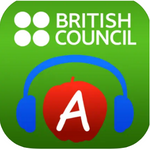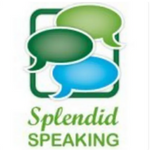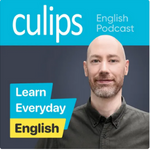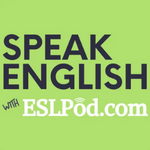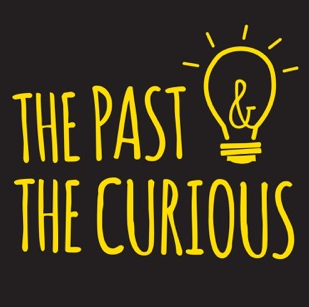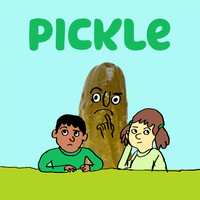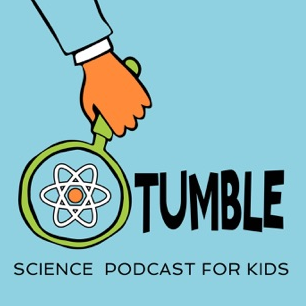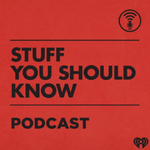
English Podcasts for Learners [2024 Edition]
Did you know English podcasts can help you improve your English language skills?
To improve your English listening comprehension, you need to go beyond textbooks and start hearing how the language sounds.
In this guide, I’ll show you 22 great English podcasts that will help you level up your listening comprehension skills in an easy and fun way.
Contents
- Recommended English Podcasts
-
- The English We Speak
- Podcasts in English
- EnglishClass101
- LearnEnglish
- Splendid Speaking
- Better @ English
- Voice of America Learning English
- Business English Pod
- Culips ESL Podcast
- Speak English With ESLPod
- Luke’s English Podcast
- This American Life
- The Past & The Curious
- News in Slow English
- Freakonomics Radio
- Radiolab: Pickle
- What If World
- Tumble
- Dramas from BBC Learning English
- Stuff You Should Know
- Global News Podcast from BBC
- Scientific American Podcast: 60-Second Science
- How to Use English Podcasts to Improve Your Listening Skills
- And One More Thing...
Download: This blog post is available as a convenient and portable PDF that you can take anywhere. Click here to get a copy. (Download)
Recommended English Podcasts
The English We Speak
Level: Intermediate
This English language learning podcast series from the BBC focuses on everyday phrases and slang — the kind of English that native speakers use.
These podcasts are published weekly, and each one is only about three to four minutes long.
Examples of common English expressions explored in the series include “use your loaf,” “skeletons in the closet” and “take the mickey.”
English is spoken at a slightly slower speed in these podcasts to make following along easier. Every syllable is enunciated (pronounced) clearly.
The podcast usually features two presenters having a conversation with each other. Sound effects are also used so it feels like the teachers/speakers are in different locations.
Podcasts in English
Level: Beginner to Upper Intermediate
Podcasts in English is an English language learning podcast series that features English spoken in a variety of settings.
The short lessons are spoken entirely in English and feature conversations between two English language speakers.
The lessons cover a broad range of topics. Some of the subjects you may hear being discussed are the Winter Olympics, horseback riding experiences and Facebook.
The podcasts are supported by transcripts, worksheets and vocabulary tasks.
EnglishClass101
Level: Beginner to advanced
This podcast series by Innovative Language lets you choose between four learning levels: absolute beginner, beginner, intermediate and advanced.
The podcasts are presented by hosts who also act out different scenes. Once a scene has been performed, it’s repeated at a much slower speed.
The next section of each episode provides cultural information. This is followed by a focus on vocabulary and phrases, while the last section covers important grammar points.
LearnEnglish
Level: Beginner to intermediate
The hosts of this very helpful English language podcast take the listener through a number of different scenarios.
These are acted out in dialogue and are the kind of situations people experience every day. The podcasts also include broader discussions of some of the topics.
The presentation is lively, upbeat and engaging, and the English dialogues are spoken at near normal speed.
There’s a lot of good material available to accompany the podcast, some of which can be read beforehand to help you make the most of each lesson.
Splendid Speaking
Level: Advanced
Splendid Speaking offers an interesting approach to learning English.
Each lesson features interviews and discussions with non-native English language speakers. The recordings also include expert feedback about their performances.
Not only is this a very effective way to learn, but it’s also fun to hear how other learners are coping with the language. You may even be able to spot some of their mistakes!
Better @ English
Level: Intermediate and above
Better @ English offers a variety of English language podcasts featuring real conversations with native speakers.
Episode topics range from the serious to the silly and everything is spoken at a normal speed.
Listening to real, natural-sounding conversations is a great supplement to classroom and textbook learning. This familiarizes the student with the pace of the language and some of its idioms and common expressions.
Better @ English is suitable for the intermediate student and above, or for the beginner who really wants to challenge themselves. These English language podcasts are accompanied by transcripts and vocabulary notes.
Voice of America Learning English
Level: Intermediate to advanced
Voice of America is an English language news and information service that includes a variety of programs.
There’s a weekly global news program, a science documentary section, programs about the history of America and a series on American English idioms.
All the programs are narrated in English and spoken at a reduced speed. Each podcast is divided into segments and uses music and sound effects to provide an engaging audio experience.
Voice of America is a learning tool that adds variety to structured lessons and conversation exposure.
Business English Pod
Level: Upper beginner to advanced
Business English Pod offers an audio immersion into the language of the business world, covering important language required for every business situation.
The episodes follow a simple structure with the host speaking for a few minutes on a set topic.
The English is spoken a little slower than normal native speed and is therefore quite easy to follow. There are transcripts, quizzes and vocabulary guidance accompanying each podcast.
Business English Pod provides a good insight into how business is conducted in English-speaking companies. In addition, the lessons offer valuable listening and comprehension practice.
Culips ESL Podcast
Level: Upper beginner to intermediate
Whether you can barely say “hello” in English or can talk fluently in the language for several minutes, there are some real gems for you here!
The Culips site has podcasts of several different types.
The “Catch Word” podcast focuses on casual expressions, idioms and slang to make you sound more like a native speaker.
The “Chatterbox” podcast features real conversations between people. “Simplified Speech” is a podcast devoted to natural English conversations at a slow, easy-to-follow pace.
These podcasts are all intelligent, practical and well-made.
Speak English With ESLPod
Level: Intermediate to advanced
ESL Podcast has a vast library of episodes — more than 900 and still growing.
The host for the ESL podcast is Dr. Jeff McQuillan and the other voice you’ll often hear belongs to Dr. Lucy Tse. Both have PhDs in applied linguistics.
Each podcast features a dialogue between two characters. The rest of the episode then concentrates on key words along with their uses and meanings. Each podcast is also accompanied by a learning guide.
The English audio is spoken at about half of normal speed and is therefore easy to follow as a learner.
Luke’s English Podcast
Level: Intermediate to advanced
Luke is a qualified English language teacher and stand-up comedian who hosts this engaging and entertaining podcast series.
His intention is to “make you laugh while you learn” and he provides a rich mix of subject material.
A quick look at the titles of some of the podcasts reveals such installments as “Doctor Who Episode—Language Analysis,” “The Prawn Story” and “English Premier League Football.”
Luke has a warm, engaging voice that draws in the listener. The English is spoken at normal speed and transcripts are also available.
This American Life
Level: Advanced
This American Life is one of the most popular podcasts in the United States. The podcast follows the same format as the radio show of the same name.
Each episode is themed and includes a variety of true tales of everyday people. Past themes have included “Back to School”, “Amusement Parks” and “Fear of Sleep”.
The podcast features interviews with real Americans from all over the country. For the language student, this is a terrific way to become familiar with regional accents and the different speeds that US English is spoken.
This American Life is also an exciting podcast. Some of the stories are moving, funny and surprising.
The Past & The Curious
Level: Intermediate
This English podcast focuses on teaching history to kids, but don’t think this is another boring history podcast.
The Past & The Curious is made especially for children and families, so it’s both entertaining (it includes songs) and educational.
Presented by Mick Sullivan, this podcast is perfect for learners of English who want to improve their listening skills and break the intermediate plateau.
Sullivan has a very clear diction, so it’s not difficult to follow what he says. He teaches historical facts in a funny and interesting way that makes you feel like you’re inside the story.
News in Slow English
Level: Intermediate to advanced
The podcast News in Slow English is an amazing option to help you to improve your listening skills.
Thanks to this podcast, you’ll learn about the world and the events that are happening around us in English.
The speakers read the news slower than usual, so it’s very easy to follow the audio. There are also transcripts available for each story so you can read along.
The News in Slow English website includes different sections that’ll help you to understand the podcasts better and practice their content.
The Grammar section explains a grammar topic from the podcast in a very clear way and with a lot of examples. The Pronunciation and Quiz tabs let you practice your speaking and listening comprehension.
Freakonomics Radio
Level: Advanced
Freakonomics Radio is an award-winning podcast that “explores the hidden side of everything”.
The podcast is inspired by the series of Freakonomics books and is hosted by co-authors Steven D. Levitt and Stephen J. Dubner.
This podcast is an entertaining and riveting examination of many aspects of our lives. This includes news, pop culture and political issues both global and local.
Freakonomics Radio explores subjects from different angles and in some depth. The breadth of topics covered means that you will be able to pick up English for many different facets of life.
There is a lot of light-hearted banter between the hosts which helps to ensure that concepts, issues and points of views are understood.
Radiolab: Pickle
Level: Pre-Intermediate or higher
From the creators of Radiolab, Pickle is a podcast where adults answer easy and not-so-easy questions for children.
The podcast has been created specifically for children, so the language is simple and the speakers talk slowly and clearly.
Pickle covers a topic in each episode and tries to answer different questions related to it.
With this podcast, intermediate learners of English will be able to learn about things such as friendship, the Romans and even moral dilemmas!
This is the perfect podcast if you want to improve your listening skills while learning interesting stuff.
What If World
Level: Intermediate to advanced
Even though the What If World podcast was created for kids, I must confess I started listening to it when I was doing research for this post, and now I can’t stop!
If you’re curious about the world and you’d like to have answers to crazy questions (for example: “What would happen if clouds were made of cotton candy?”), this podcast is perfect for you.
Each episode lasts around 20 minutes and revolves around a crazy question that’s used in order to teach concepts and lessons to children.
The podcast is often performed in silly voices and covers some unusual topics, so it might be challenging for beginners.
Tumble
Level: Intermediate to advanced
Tumble is another podcast created for kids. This means you’re listening to easy English that even a child can understand.
But even if you’re 50, you’ll learn a lot of interesting things. We’re all like little children when we start learning a new language!
Tumble is perfect for learners of English who are interested in science. Each episode is only about 15 minutes long, and it normally covers one topic related to science and its recent discoveries.
If you want to learn about smells, viruses, human DNA, the moon and even dinosaurs, you’re going to love Tumble.
Dramas from BBC Learning English
Level: Intermediate and advanced
Get ready to experience the greatest English dramas of all time, narrated in an engaging way in short five to 10-minute-long episodes!
The BBC Learning English podcast is aimed at intermediate and advanced learners of English, but I think anyone can give it a try because the episodes are really short and easy to understand with a transcript.
The scripts are available under the text, so you can read and listen to the story at the same time. If you prefer to print the text, you can also download it in PDF format.
Additionally, after the script, you can find a list of the more difficult words with their definitions or explanations in simple English.
Stuff You Should Know
Level: Advanced
Stuff You Should Know is an entertaining show that covers many funny and strange questions and topics.
Previous topics tackled by the podcast include: “Do zombies exist?”, “How black boxes work” and “Do objects or experiences make us happier?”
This podcast’s diverse topics and occasional use of technical language exposes the student to a rich source of vocabulary.
Global News Podcast from BBC
Level: Advanced
Global News is produced by the BBC World Service, the world’s largest international broadcaster.
The podcast is published twice daily and is a roundup of the latest global news. The stories have been collected from World Service news output and include interviews and location reports from BBC correspondents.
The BBC presenters and reporters are well spoken and easy to understand. They possess an excellent command of the English language that will help students to increase their vocabulary.
Scientific American Podcast: 60-Second Science
Level: Upper intermediate to advanced
Scientific American is one of the world’s premier science magazines and brings the latest science news, features and analysis to the general public.
This podcast provides daily updates of some of the most important developments in research.
The presenters speak with authority on many different scientific topics, using language that communicates the excitement of scientific research in a way that the average person can understand.
This is particularly useful for anyone who wants to work in science-related fields or who has a love of astronomy, biology, chemistry, physics and how nature works.
How to Use English Podcasts to Improve Your Listening Skills
You already know that using podcasts is a great way to improve your listening skills, but do you know how to make the most (use in a way that’ll give the best result) out of them?
There are a lot of techniques you can use while listening to English podcasts that’ll help you to become a master of English listening.
Listen as background first
To start, you should listen to podcasts in the background while you’re doing something else.
It may seem counterintuitive (unreasonable or the opposite of what you’d expect), but listening to English podcasts while you do other tasks actually helps your brain to get used to the language.
That’s because it lets you get comfortable with the sounds without worrying about understanding the words.
Listen a second time, but now pay close attention
Now listen to the podcast a second (and even third) time and pay attention to all the words and expressions you recognize. If you feel the speaker is talking too fast, try reducing the speed of the audio to 75% (when available).
Read the transcript, if it’s available
Reading the transcript while you listen to a podcast is amazingly beneficial because you’re getting the same information through two different channels: your eyes and your ears.
This helps your brain remember and comprehend more of the language.
Repeat words and sentences out loud
Pause the podcast whenever you want to and go back to words and expressions that are new to you or you think are difficult to pronounce. Repeat them over and over until you get them just right.
Having good pronunciation as well as a large vocabulary is essential for a variety of situations such as using English in school or business English at work.
Pick up new vocabulary and grammar from the podcast
If you look up new words and learn and review grammar bits you hear in each podcast you listen to, you’ll likely remember them a lot easier in the future.
Plus, as you already know, learning new vocabulary and grammar is essential to growing as an English language learner.
Continue studying the new information you learned
So maybe you learned some new vocabulary words and a new grammar concept by repeating a line a few times.
You don’t want this new information to just sit in your notebook. You want to actually use it in your English language interactions.
To do that, you’ll need to keep studying everything you just learned until it’s filed away in your long-term memory.
For example, you can turn the new vocabulary words you learned into flashcards—whether you do this by hand or on your favorite flashcard app.
Another effective way to learn new language information is to see it used in context.
FluentU takes authentic videos—like music videos, movie trailers, news and inspiring talks—and turns them into personalized language learning lessons.
You can try FluentU for free for 2 weeks. Check out the website or download the iOS app or Android app.
P.S. Click here to take advantage of our current sale! (Expires at the end of this month.)
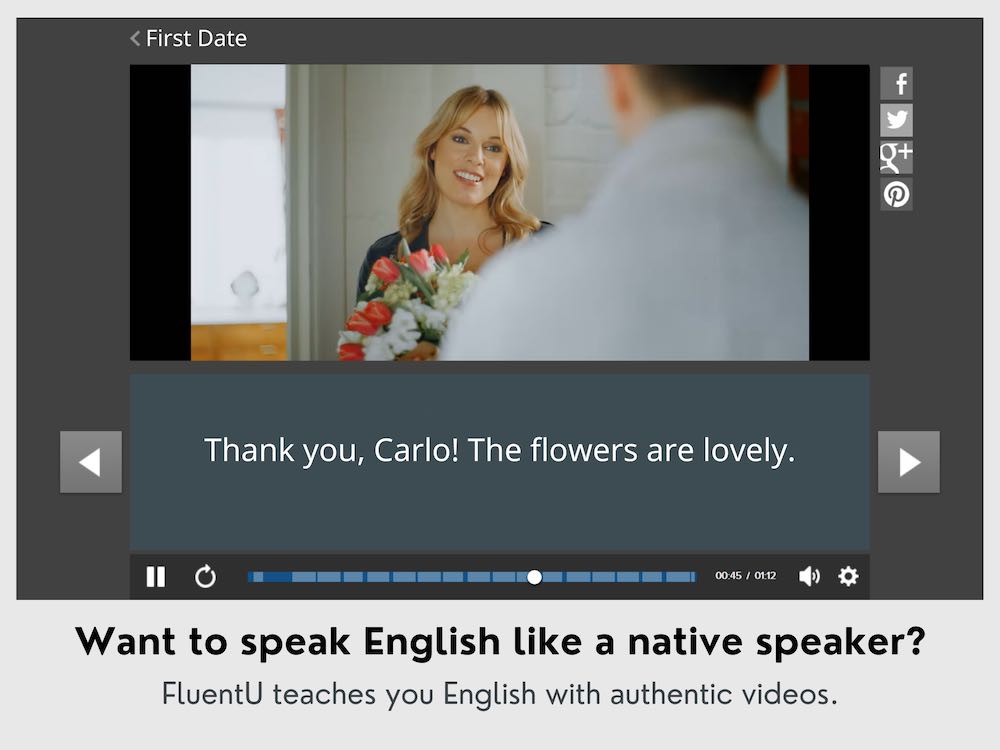
Listening to English podcasts is one of the best ways to improve your listening skills, especially if you choose podcasts that cover topics you’re interested in and that are appropriate for your level of English.
Download: This blog post is available as a convenient and portable PDF that you can take anywhere. Click here to get a copy. (Download)
And One More Thing...
If you like learning English through movies and online media, you should also check out FluentU. FluentU lets you learn English from popular talk shows, catchy music videos and funny commercials, as you can see here:
The FluentU app and website makes it really easy to watch English videos. There are captions that are interactive. That means you can tap on any word to see an image, definition, and useful examples.
For example, when you tap on the word "searching," you see this:
Learn all the vocabulary in any video with quizzes. Swipe left or right to see more examples for the word you’re learning.

FluentU helps you learn fast with useful questions and multiple examples. Learn more.
The best part? FluentU remembers the vocabulary that you’re learning. It gives you extra practice with difficult words—and reminds you when it’s time to review what you’ve learned. You have a truly personalized experience.
Start using the FluentU website on your computer or tablet or, better yet, download the FluentU app from the iTunes or Google Play store. Click here to take advantage of our current sale! (Expires at the end of this month.)



